The Surreal House exhibition, Barbican Art Gallery
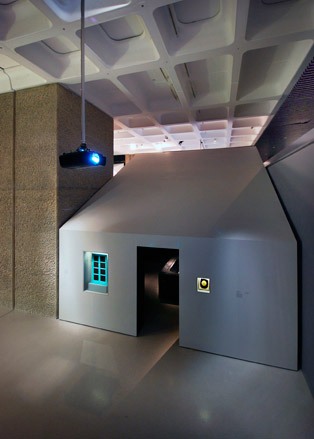
The Barbican art gallery, will play host to a new exhibition on 10 June designed specifically to highlight the significant role surrealism has played in architecture.
Installed by acclaimed architects Carmody Groarke, The Surreal House brings together over 150 works, intimating the relationship that first generation Surrealists such as Dali, Duchamp and Giacometti had with architecture, or more specifically the house, in their collective imaginations.
The lower galleries will be used to represent the inside of a house, reflecting a labyrinth journey through varying rooms which will be defined by varying degrees of sound, light and installations, all designed to affect the senses.
The exhibition is further accentuated by cinematic portrayals throughout of houses being transformed, either through dream-like arrangements or by physical attack, concluding with a sequence taken from Andrei Tarkovsky's final film - The Sacrifice - in which he sets fire to his house in an act of self-destruction.
The Surreal House exhibition will run from 10 June to 12 September. The house itself is also the location for Wallpaper's latest fashion shoot, which can be viewed in our October issue.
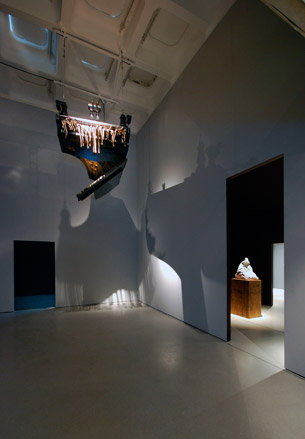
'The Surrealist House' at the Barbican, 2010.
Rebecca Horn’s Concert for Anarchy precariously hangs from one of the opening rooms.
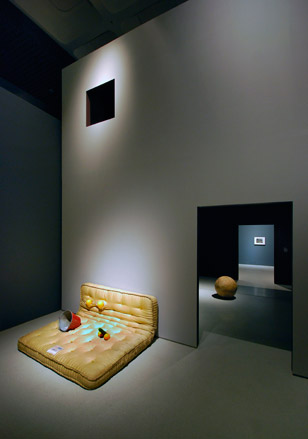
'The Surrealist House' at the Barbican, 2010.
Sarah Lucas's Au Natural uses slang terms to construct tangible structures based on those perceptions.
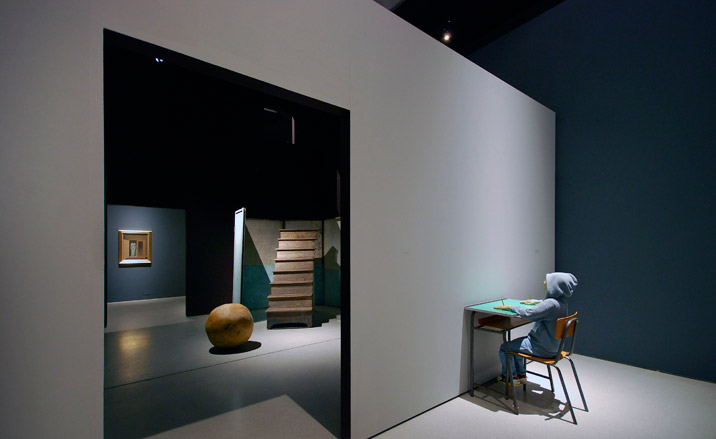
'The Surrealist House' at the Barbican, 2010.
The background shows an installation highlight: Louis Bourgeois's No Exit whilst in the foreground is Charlie Don't Surf by Maurizo Cattelan.
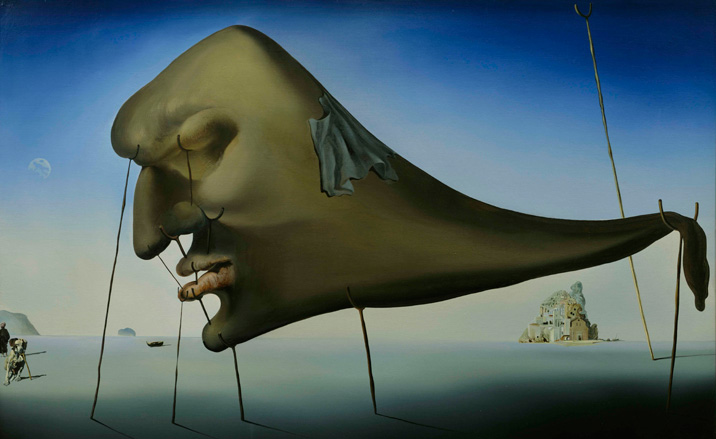
'Sleep' by Dali, 1937.
Dali's painting, a self-portrait, is a representation of a dream-like state whilst also being true to his premise that sleep is a sort of monster sustained by the crutches of reality
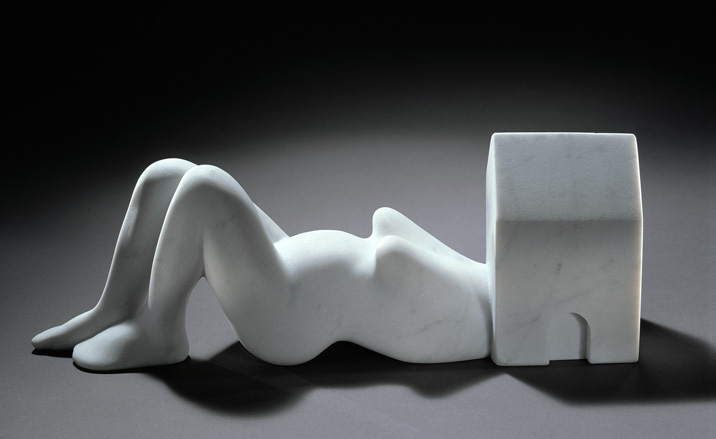
'Femme Maison' by Louise Bourgeois, 1994.
Presenting an on-going narrative of the relationship between womanhood and domesticity the pieces present a figure that is half woman, half house.
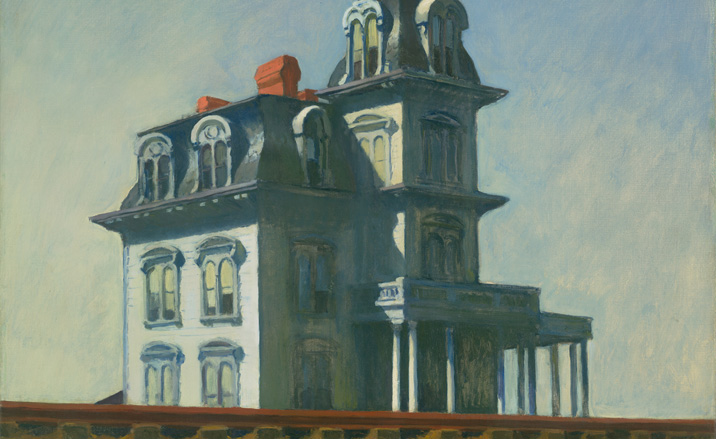
'House by the Railroad' by Edward Hopper, 1925.
One of the defining houses of the 20th century, Hopper's mansion was the inspiration for the houses in Hitchcock's Psycho and the Addams family.

'Le facteur Ferdinand Cheval a Hauterives' by Gilles Ehrmann, 1962.
Ehrmann's image is taken of Ferdinand Cheval's Le Palais Ideal -- a house that Cheval, a postman by trade, made from scratch. The gathering of stones was taken on Cheval's mail route and the palace's construction took him 33 years.
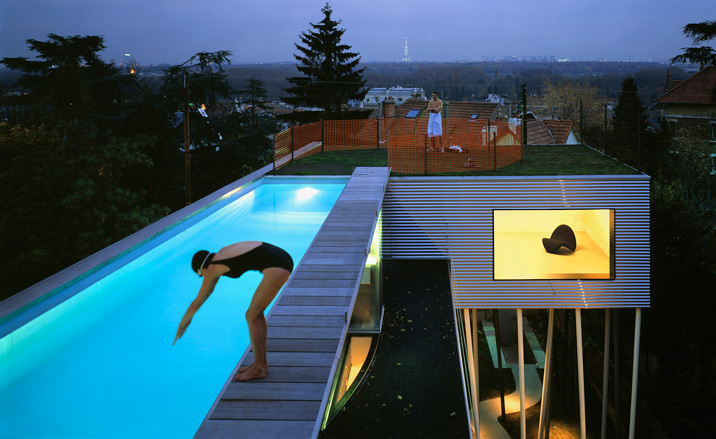
'Villa Dall'Ava' in Paris by Office for Metropolitan Architecture, 1991.
This house, which looks to sit precariously on top of thin stilts, seems to adhere to Dali's contemporary work.
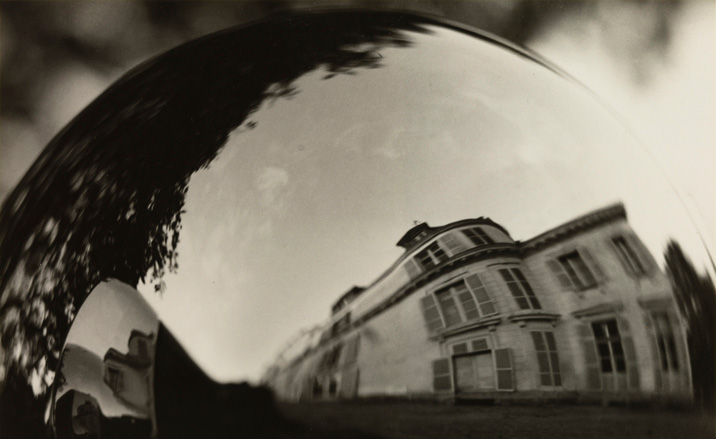
'Untitled' by Man Ray, 1920.
Man Ray was influential in both Surrealism and Dadaism and contributed works to both. They are often noted for juxtaposition of contrasting elements to create meaning.

'The Lovers' by Rene Magritte, 1928.
Margritte's mother committed suicide by drowning herself when the artist was a child, supposedly, when she was pulled out of the river her nightdress covered her face. This is said to be the reason why numerous examples of Margritte's work shows faces obscured by cloth.
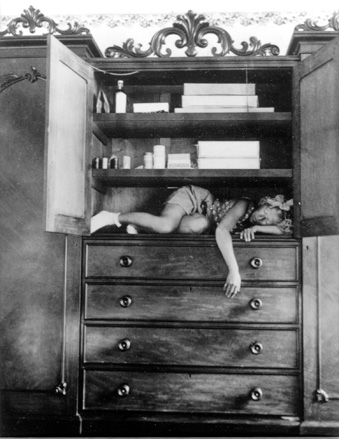
'Self Portrait (in cupboard)' by Claude Cahun, 1932.
The wardrobe, or cupboard, is a place that is resonant of the Surrealist movement and interestingly perceived by Cahun in her self-portrait.
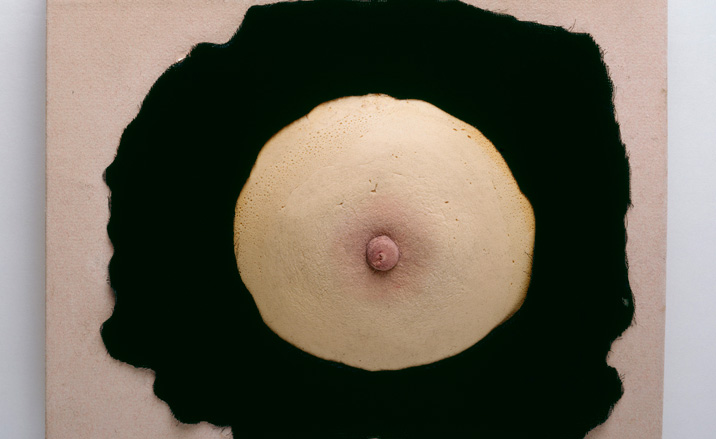
'Priere de Toucher' by Marcel Duchamp, 1947.
Priere; de Toucher: a relief of a woman's breast mounted on a cloud of black velvet. Originally the front cover of a luxury edition of a surrealist book, here it plays the role of the doorbell to the Surreal house.
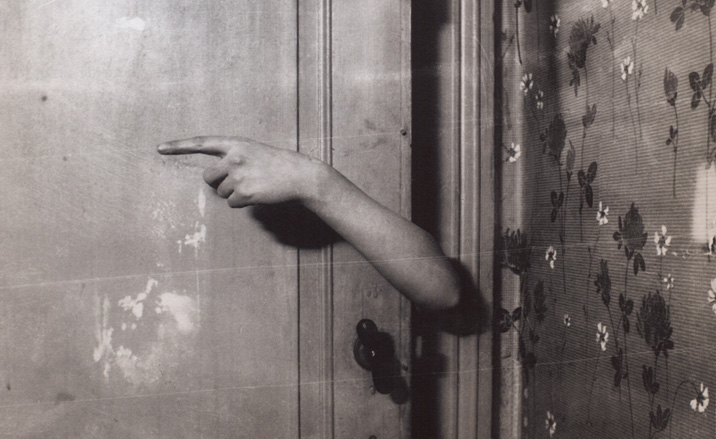
'La Bras Revelatuer' by Paul Nouge, 1929-1930. Paul Nouge was a Belgian poet and surrealist photographer who, in 1968, published 19 photographs collectively called "Subversion of the Images". Surreal House hosts the entire collection.
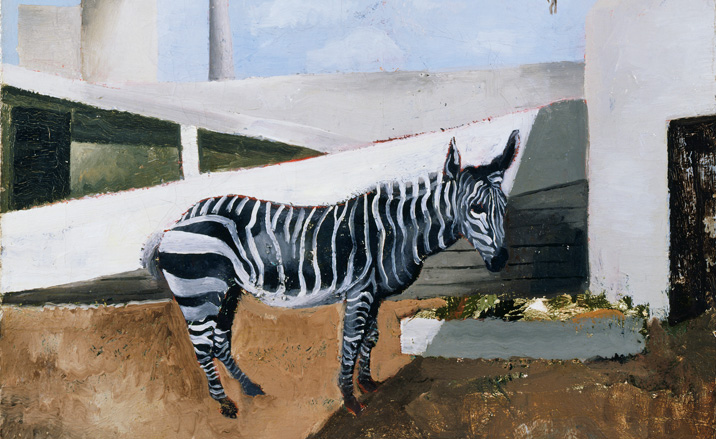
'Zebra and Parachute' by Christopher Wood, 1930. Image courtesy of Tate, London, 2010. Showing an interesting juxtaposition of architecture, a zebra and a parachutist, this painting is an intriguing insight into one of Wood's final paintings and a look into the beginnings of surrealist intentions.
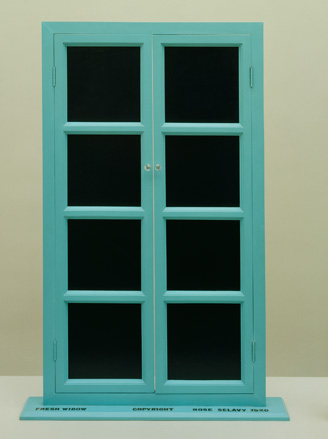
'Fresh Window' by Marcel Duchamp, 1920.
The first work signed by Duchamp's female alter ego, Rose Selavy. The glass panes are obscured by black leather -- denying any view, and instead, giving rise to the idea that Duchamp is rejecting tradition and obscuring that which we expect to see. Fresh Widow acts as a window for the Surreal House.
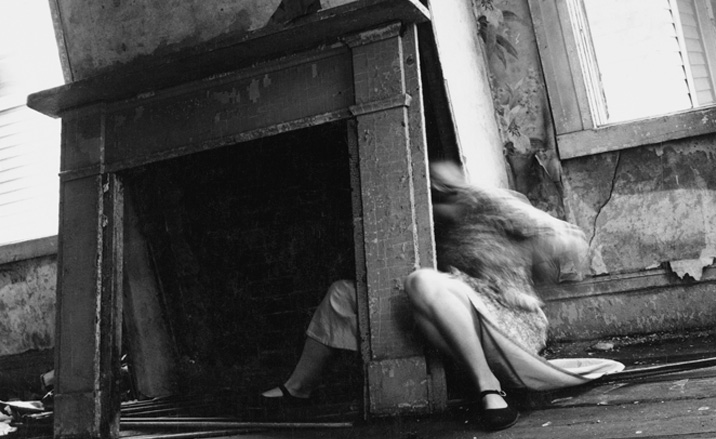
'House 4' by Francesca Woodman, 1976.
Francesca Woodman amassed a body of work which consisted of around 800 photographs before her suicide, aged 22. Many of her known traits can be seen in this photograph: such as using the camera to create a temporary space in which images are transformed through long shutter exposure.
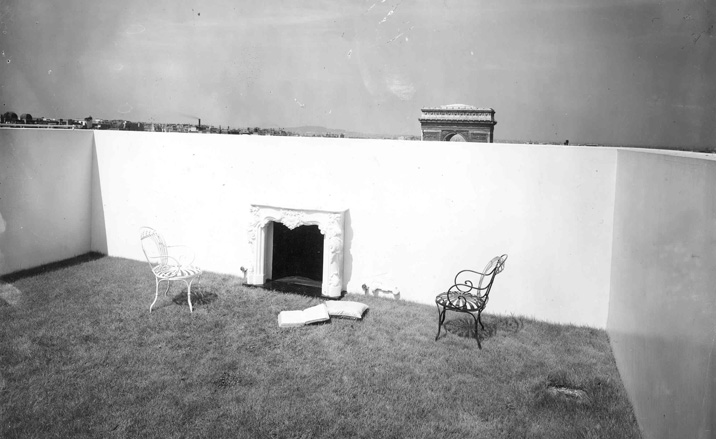
'Le Corbusier and Pierre Jeanneret, 1929-31. Taken of Bestegui Apartment, Paris.
This image shows a little discussed work by Le Corbusier which is, by accounts, one of his most paradoxical works. The photograph is of the roof garden which has a false mantelpiece and fireplace. The design is more reflective of the surrealist tastes of the client: Charles de Beistegui than Le Corbusier himself.
ADDRESS
Barbican Centre
Silk Street
London EC2Y 8DS
Wallpaper* Newsletter
Receive our daily digest of inspiration, escapism and design stories from around the world direct to your inbox.
-
 All-In is the Paris-based label making full-force fashion for main character dressing
All-In is the Paris-based label making full-force fashion for main character dressingPart of our monthly Uprising series, Wallpaper* meets Benjamin Barron and Bror August Vestbø of All-In, the LVMH Prize-nominated label which bases its collections on a riotous cast of characters – real and imagined
By Orla Brennan
-
 Maserati joins forces with Giorgetti for a turbo-charged relationship
Maserati joins forces with Giorgetti for a turbo-charged relationshipAnnouncing their marriage during Milan Design Week, the brands unveiled a collection, a car and a long term commitment
By Hugo Macdonald
-
 Through an innovative new training program, Poltrona Frau aims to safeguard Italian craft
Through an innovative new training program, Poltrona Frau aims to safeguard Italian craftThe heritage furniture manufacturer is training a new generation of leather artisans
By Cristina Kiran Piotti